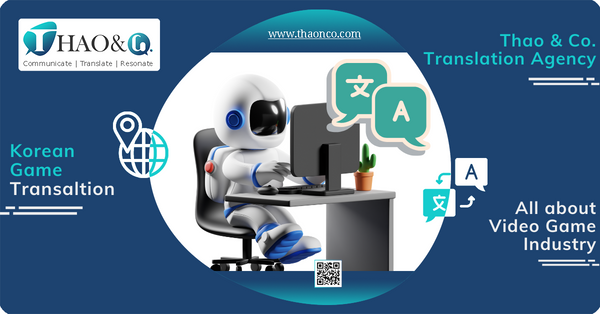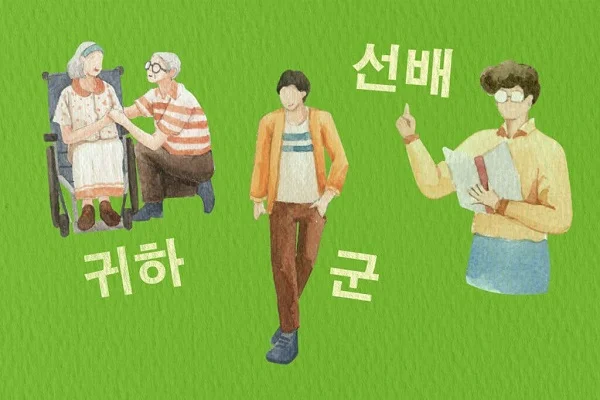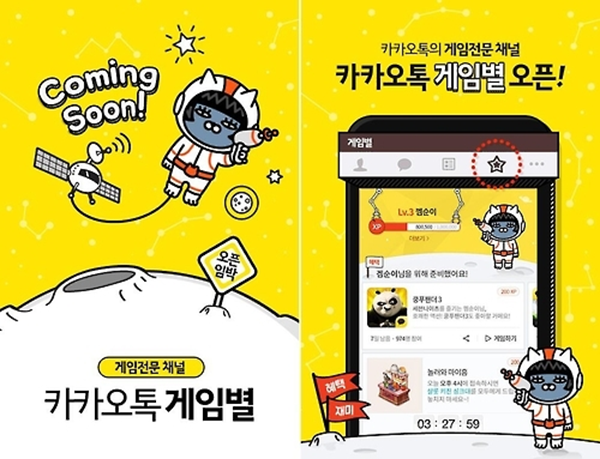What challenges does Korean game localization present? What should be considered when localizing Korean games? To gain a deeper understanding of this process, let’s explore with Thao & Co. the details in this article.
The video game market in South Korea ranks fourth globally, accounting for 6.3% of the global gaming industry, following the United States, China, and Japan. According to statistics from the Korean Creative Content Agency (KOCCA), video games in this country are favored by 70.5% of the population.
The market value of the gaming industry in South Korea is estimated to be over $7 billion. The major market players in this country are Netmarble, NCSoft, and Nexon.
However, there is still plenty of room for individuals or organizations to participate in this race, especially given the rapid development of technology.
Some prominent games developed in “The Land of Morning Calm” include MapleStory, Audition Online, The King of Fighters, Lineage W, Lineage 2M, and Lineage M.
What sets Korean game translation apart from other languages?

Here are some difficulties that translators may encounter when localizing Korean games:
This can cause issues when translating games, such as the length of the original content being longer or shorter than the Korean translation. Therefore, when translating games into Korean, translators need to have an extensive understanding of the language pair to accurately translate the meaning and ensure the layout of the translation in the game.
The sentence structure in Korean differs significantly from other languages. For example, Korean follows the Subject + Object + Verb sentence structure. In daily communication, they tend to omit the subject but still maintain the meaning of the sentence.
In contrast, in English, the sentence structure follows the order of Subject + Verb + Object. This shows a significant difference between the language pairs and poses a challenge for the game translation team.
This is also considered a point that often hinders translators when adapting games to other languages.
The honorific system of Korean consists of three main types: Subject honorifics, object honorifics, and addressee honorifics.

Each type will have a different usage and meaning in the sentence. Therefore, translators need to be very familiar with both the source language and Korean language to ensure the quality of the translated content.
It can be said that Korean pronouns are diverse and rich in order to express the flexibility of different shades of relationships, such as intimacy, social status, age, or experience.
Moreover, they also encapsulate traditional cultural values of this country such as respecting teachers and elders, community consciousness, etc. Using pronouns appropriately is also a challenge in Korean game translation. Using the wrong pronouns can change the meaning of the content.
Fully conveying the cultural elements of South Korea in the game localization is also considered a challenge for translators. This requires the translation team to truly grasp the local culture as well as the culture of the language to be translated and skillfully convey it in the translation.
Thorough localization testing to avoid cultural conflicts or sensitive meanings is an essential step. This is especially true for a country that values meticulousness and professionalism like South Korea.
What should be considered when localizing Korean games? Here are 5 important factors:
Creating a visually appealing game interface can likely help attract target players effectively. This is particularly important when translating Korean games because the gaming community in this country loves video games that are invested in eye-catching effects and appealing visuals.
The Korean language often omits minor elements, so translators need to understand the context well to create the most precise translation.
Careful consideration of each context in the game helps you determine what is the best way to engage players and make your games resonate with the Korean culture.
As mentioned earlier, the Korean language has a variety of honorific systems. Therefore, translators need to understand and know how to use sentence endings, and pronouns correctly for each specific context.
The visual of the game is also a factor that needs to be localized carefully to foster familiarity and friendliness with the target players.
Changing or adding graphics, characters, costumes, and accessories with the cultural characteristics of Korea can help attract and create a good impression in the gaming community.
KakaoTalk is a mobile messaging app installed on most smartphones in this country.

Integrating games with KakaoTalk helps build a player base in Korea. This is an important step for publishers to reach new players.
The rates of Korean game translation are calculated based on the following factors:
To acquire quality Korean game translations, choosing a reputable and professional game translation agency is very important.
With extensive experience in game translation and many other Korean translation projects, Thao & Co. commits to helping you create an effective and captivating Korean game version.

We have a team of native linguists with solid expertise who can provide professional translation services for your Game, App and Website.
Moreover, during the collaboration process, you will be given access to our dedicated Dashboard to track project progress, manage documents, and view to our translator’s profiles in an intuitive and effortless way through our proprietary platform. This enables an efficient and transparent collaboration between two parties to achieve the best results.
To enhance the quality of the Korean version of your game, Thao & Co. also provides supplementary services such as:
Above are some insights into Korean game localization that Thao & Co. would like to share with you. Hopefully, the article can provide you with many new perspectives.
If you need further consultation on Korean game localization, please contact us through our Get a Quote page for prompt support.